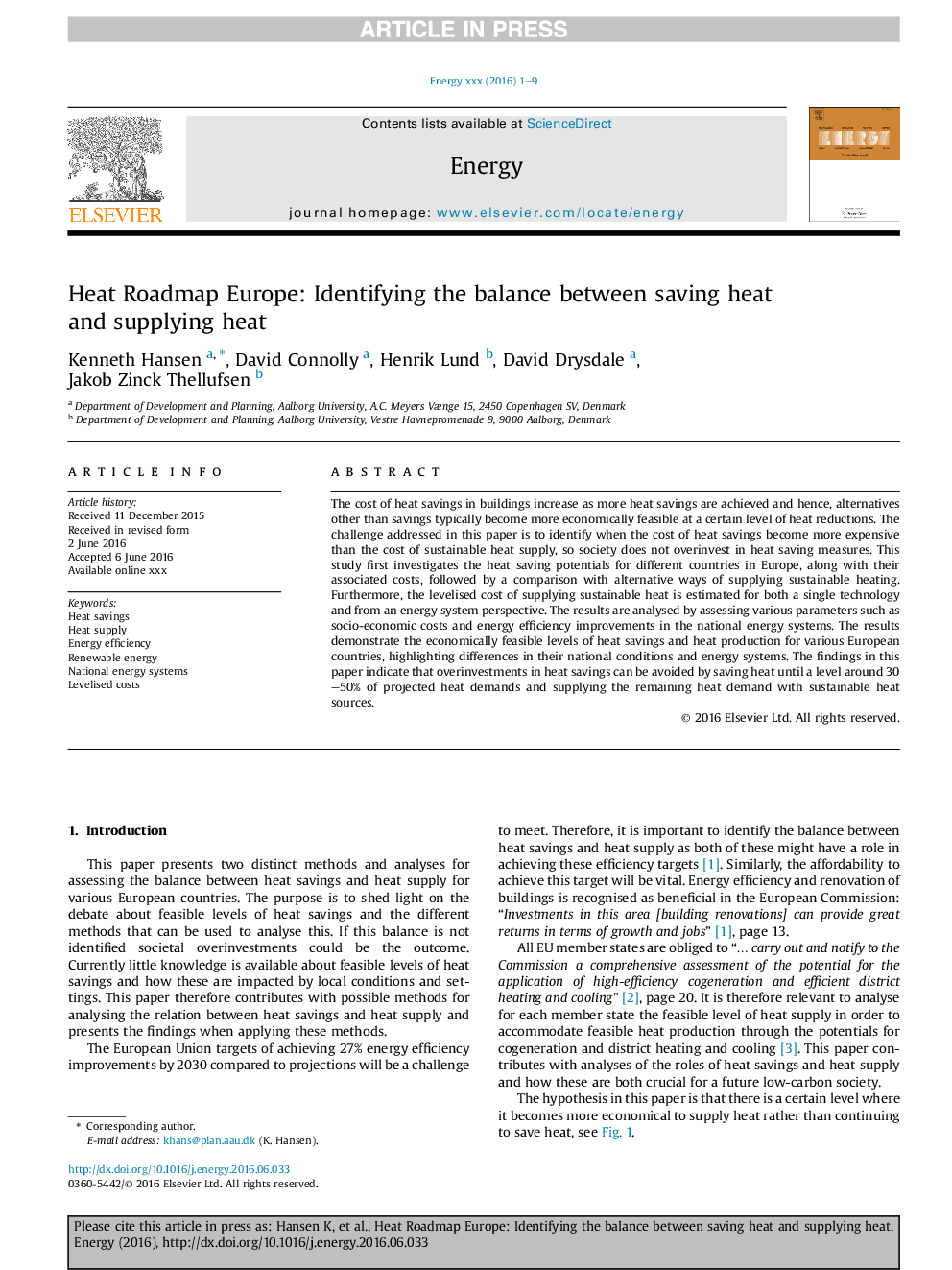| Article ID | Journal | Published Year | Pages | File Type |
|---|---|---|---|---|
| 5477250 | Energy | 2016 | 9 Pages |
Abstract
The cost of heat savings in buildings increase as more heat savings are achieved and hence, alternatives other than savings typically become more economically feasible at a certain level of heat reductions. The challenge addressed in this paper is to identify when the cost of heat savings become more expensive than the cost of sustainable heat supply, so society does not overinvest in heat saving measures. This study first investigates the heat saving potentials for different countries in Europe, along with their associated costs, followed by a comparison with alternative ways of supplying sustainable heating. Furthermore, the levelised cost of supplying sustainable heat is estimated for both a single technology and from an energy system perspective. The results are analysed by assessing various parameters such as socio-economic costs and energy efficiency improvements in the national energy systems. The results demonstrate the economically feasible levels of heat savings and heat production for various European countries, highlighting differences in their national conditions and energy systems. The findings in this paper indicate that overinvestments in heat savings can be avoided by saving heat until a level around 30-50% of projected heat demands and supplying the remaining heat demand with sustainable heat sources.
Related Topics
Physical Sciences and Engineering
Energy
Energy (General)
Authors
Kenneth Hansen, David Connolly, Henrik Lund, David Drysdale, Jakob Zinck Thellufsen,
